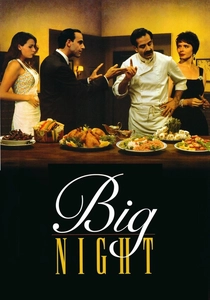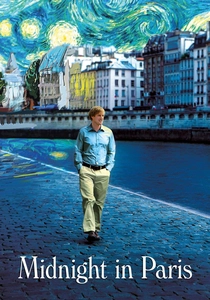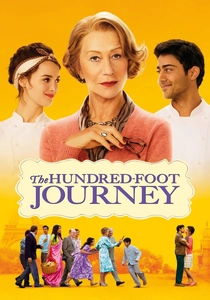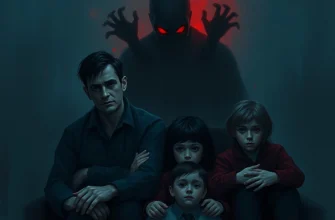Heb je genoten van de Argentijnse film 'Chinese zum Mitnehmen' (2011) en ben je op zoek naar soortgelijke films of series? Dit artikel biedt 10 aanraders die dezelfde unieke mix van humor, emotie en menselijke verbinding bieden. Perfect voor liefhebbers van hartverwarmende verhalen!

Tampopo (1985)
Beschreibung: This Japanese 'ramen western' shares the reference's love for food and its ability to connect people. It's a quirky, heartfelt celebration of culinary passion and human relationships.
Fakt: The film is considered one of the first 'foodie' movies and has inspired many chefs. It includes several vignettes about different people's relationships with food.
 Jetzt ansehen
Jetzt ansehen

Babette's Feast (1987)
Beschreibung: This classic film shares the reference's theme of food bringing people together and transforming lives. It's a quiet, profound story about generosity and the power of a shared meal.
Fakt: The film was the first Danish movie to win the Academy Award for Best Foreign Language Film. All the food in the famous feast scene was real and prepared by a French chef.
 Jetzt ansehen
Jetzt ansehen

Big Night (1996)
Beschreibung: Focusing on food, family, and cultural identity, this film mirrors the reference's exploration of passion and tradition. It's a poignant yet humorous look at the restaurant business.
Fakt: The famous timpano dish featured in the film became iconic and is now recreated by fans worldwide. The entire film was shot in just 21 days.
 Jetzt ansehen
Jetzt ansehen

Amélie (2001)
Beschreibung: With its whimsical storytelling and focus on small, meaningful human connections, this film mirrors the charm and warmth of the reference. It celebrates everyday life with a magical touch.
Fakt: The film's distinctive visual style was achieved using a special color-grading process to enhance greens and reds. It was shot in over 80 locations in Paris.
 Jetzt ansehen
Jetzt ansehen

Chocolat (2000)
Beschreibung: With its themes of food bringing joy and challenging norms, this film aligns with the reference's spirit. It's a sensual, uplifting story about pleasure, tradition, and community.
Fakt: The chocolate shop set was fully functional, with real chocolate made daily. Juliette Binoche actually learned to make chocolate for her role.
 Jetzt ansehen
Jetzt ansehen

Julie & Julia (2009)
Beschreibung: Like the reference, this film intertwines two stories of personal growth through food and writing. It celebrates the joy of cooking and the impact it can have on people's lives.
Fakt: Meryl Streep's portrayal of Julia Child was so accurate that Child's own husband approved of her performance. The film combines two separate memoirs into one narrative.
 Jetzt ansehen
Jetzt ansehen

Midnight in Paris (2011)
Beschreibung: This movie captures the magic of unexpected encounters and nostalgia, similar to the reference's themes of serendipity and personal transformation. It blends reality with fantasy in a lighthearted way.
Fakt: The film features numerous real-life historical figures, including F. Scott Fitzgerald and Ernest Hemingway. It was Woody Allen's highest-grossing film at the time of its release.
 Jetzt ansehen
Jetzt ansehen

The Intouchables (2011)
Beschreibung: This film shares a heartwarming and unlikely friendship theme, blending humor and emotional depth, much like the reference. It explores personal growth and cultural contrasts in a touching manner.
Fakt: The movie is based on a true story and became a massive box office success outside France. It was remade in Hollywood as 'The Upside' in
 Jetzt ansehen
Jetzt ansehen

Chef (2014)
Beschreibung: This film's focus on food as a means of personal expression and connection aligns closely with the reference. It's a heartwarming journey of self-discovery through culinary passion.
Fakt: Jon Favreau trained with real food trucks to prepare for his role. All food shown in the film was real and prepared fresh during filming.
 Jetzt ansehen
Jetzt ansehen

The Hundred-Foot Journey (2014)
Beschreibung: Centered around food, culture clash, and personal reinvention, this film resonates with the reference's themes of bridging divides through shared passions. It's a feel-good story about finding one's place.
Fakt: The film's culinary scenes were supervised by a Michelin-starred chef. It's based on a novel of the same name by Richard C. Morais.
 Jetzt ansehen
Jetzt ansehen









